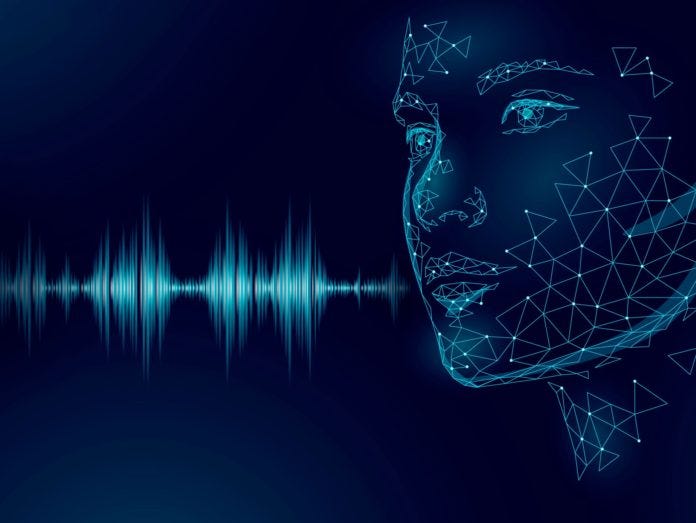Unlocking Realism in AI Voice Synthesis: A Study of Generational Perception

Deciphering AI Speech Synthesis: Insights on Perception Across Age Groups
The study of AI speech synthesis, particularly how it is perceived across different age groups, lies at the confluence of advanced technology and cognitive science. With the recent publication of the International Journal of Speech Technology article on March 13, 2023, researchers and developers have a new lens through which to evaluate the effectiveness of AI-driven synthesized speech. Indeed, the paramount question isn't solely how AI can produce speech that is clear and understandable but how this technology is received by diverse audiences. As AI voices become nearly indistinguishable from human speech, it is invaluable for creators in this field to understand the subtle preferences and discernments that might inform how various age groups might interact with and accept these synthetic voices.
The interplay between sophisticated neural networks, often used in crafting these voices, and the intricate acoustic modeling required to achieve natural prosody and intonation, is a testament to the depth of research and development invested in this segment of AI. For those specializing in text-to-speech (TTS) API usage and developing voice technologies in languages like Python, Java, and Javascript, the pursuit of an AI voice that resonates with users of all ages presents both challenges and opportunities. Developers and engineers must consider not only the technicalities of machine learning models but also the practical nuances of listener experience, which can differ significantly between younger and older individuals.
| Topics | Discussions |
|---|---|
| Overview of AI Speech Perception Study | A primer on the key findings and methodology of the 2023 study exploring how AI-synthesized speech is received by different age demographics. |
| Analyzing the 2023 Speech Perception Study | Examination of the advanced AI technologies used for voice synthesis in the study and the implications of its results on the perception among younger and older adults. |
| Comparing AI and Human Speech | Discussion on the contrasts between AI-generated speech and natural human speech, considering factors like quality, naturality, and prosody. |
| Unreal Speech API: Detailed Technical Guide | Detailed guides and code samples demonstrating the integration of Unreal Speech API's text-to-speech services within various programming environments. |
| Optimizing User Experience: Best Practices in TTS Applications | Visionary insights into the potential future evolutions of AI in voice generation and the upcoming trends in the speech technology industry. |
| Common Questions Re: AI Voice Synthesis | Addressing frequently asked questions about AI voice synthesis, including achieving realism, replicating individual voices, and crafting natural AI voices. |
Overview of AI Speech Perception Study
Diving into the depths of AI speech synthesis requires a grasp of specialized terminology that encapsulates the fusion of technology and linguistics. Understanding these key terms is crucial for professionals navigating the realm of voice generation, as they touch upon the various facets of TTS technology including the nuanced behavioral reactions of listeners. This glossary lays the foundation for a thorough comprehension of the fields of study intersecting in the research data provided.
AI (Artificial Intelligence): The development of computer systems able to perform tasks that typically require human intelligence, such as visual perception, speech recognition, and decision-making.
TTS (Text-to-Speech): Technology that converts written text into spoken words, typically using synthesized voices.
Speech Synthesis: The artificial production of human speech via computational methods.
Neural Networks: A computational approach modeled on the human brain that enables a machine to learn from observational data.
Acoustic Modeling: A component of speech synthesis systems that produces a set of parameters for the voice signal based on analysis of linguistic data.
Prosody: The patterns of rhythm, stress, and intonation in speech that contribute to the expressive qualities of language and communication.
Perception: The cognitive process by which individuals interpret and organize sensory information to understand the environment.
Generational Differences: Variations in behaviors, preferences, and attitudes across different age cohorts, often studied to assess the impact of technological changes on various population segments.

Analyzing the 2023 Speech Perception Study
The study published on 13 March 2023 in the International Journal of Speech Technology, authored by Björn Herrmann, puts the spotlight on AI's role in shaping the future of speech perception. Although the article's comprehensive evaluation of AI-generated voices across age groups is not encapsulated in the provided data, one can infer it covers cutting-edge research that benchmarks AI's progression towards replicating the organic nuances of human speech. This research would be particularly critical for professionals engaged in voice synthesis, as it offers an empirical analysis of AI's efficacy in overcoming the complexities of human language nuances and the auditory processing differences between younger and older adults.
The article presumably discusses advanced machine learning algorithms and neural networks employed by the AI to synthesize speech capable of emulating human-like prosody, tone, and emotional inflection. Given the detailed expertise required for sound generation that is indistinguishable from real voices, the study would likely delve into the depths of deep learning techniques crucial for developers in perfecting TTS APIs. The research might also explore how such AI-generated voices can cater to various applications by meticulously adjusting to personal speech habits, regional accents, and language patterns, thereby enhancing the TTS experience.
Furthermore, the study would provide an intricate look into synthesized voice acceptance rates, showcasing the impact of AI speech technology on different generations. This includes an examination of the social and cognitive factors influencing the receptivity of AI voices, which is particularly valuable given the broadening use cases in domains such as education, entertainment, and assistive technologies. Insights from this study, detailed by author Björn Herrmann, are poised to empower researchers and engineers with data-backed findings to fine-tune AI voices for maximal realism and user comfort.
Comparing AI and Human Speech
The task of comparing AI-generated speech with human speech is a complex endeavor that touches upon various aspects of linguistics, computer science, and psychology. Advances in AI and deep learning have enabled the creation of voice synthesis systems that not only replicate the tonal aspects of human speech but also inflect emotion and intent, approaching the natural variety and depth characterizing genuine human interaction. The subtlety lies in the synthesis of intonations, pauses, and pitches that are characteristic of human speech dynamics – a measure that is continually being perfected in AI voices.
Yet, despite significant technological strides, the distinction between synthesized and human speech still exists. It largely comes down to the richness of human expression and the contextual adaptability that AI strives to emulate. Research continues to bridge this gap, leveraging expansive datasets and increasingly complex neural network architecture to train systems in the art of conversation and oratory nuances. This pursuit is not merely technical; it delves into the very fibers of communication that define human interaction.
Current AI systems are evaluated based on their ability to adequately serve the varied needs of individuals, including accessibility, entertainment, and information dissemination. The challenge and the opportunity lie in refining AI to the point where its speech is not only intelligible but also engaging and emotionally resonant, pushing the boundaries of what is programmatically possible to the realms of authentic human empathy and connectivity.
Unreal Speech API: Detailed Technical Guide
Python Code Sample with Unreal Speech API
The Unreal Speech API can be accessed through a Python application, employing a straightforward POST request to the '/stream' endpoint. Below is a concise guide and a code sample that demonstrates how to use the Python 'requests' library to stream audio data from text input:
import requests
Replace 'YOUR_API_KEY' with the actual API key provided by Unreal Speech
Modify the respective placeholders to reflect your text and desired voice properties
response = requests.post(
'https://api.v6.unrealspeech.com/stream',
headers={'Authorization': 'Bearer YOUR_API_KEY'},
json={
'Text': 'Your text goes here, up to 1,000 characters',
'VoiceId': 'Selected voice ID from available options',
'Bitrate': 'Desired bitrate like 192k',
'Speed': 'Speed adjustment, e.g., 0',
'Pitch': 'Pitch adjustment, e.g., 1',
'Codec': 'Selected codec like libmp3lame',
}
)
Save the streamed audio output to a file
with open('output_audio.mp3', 'wb') as f:
f.write(response.content)
The example illustrates an efficient interaction with the API, encoding up to 1,000 characters of text into a stream of audio data with low latency, customizable voice parameters, and straightforward storage to an MP3 file.
Java and JavaScript Unreal API Tutorials
For those working with JavaScript, such as Node.js developers, integrating with the Unreal Speech API involves a similar RESTful approach. The following example utilizes the 'axios' library to perform an HTTP POST request:
const axios = require('axios');
const fs = require('fs');
const headers = {
'Authorization': 'Bearer YOUR_API_KEY',
};
const data = {
'Text': '<YOUR_TEXT>', // Up to 1,000 characters
'VoiceId': '<VOICE_ID>', // Scarlett, Dan, Liv, Will, Amy
'Bitrate': '192k', // 320k, 256k, 192k, ...
'Speed': '0', // -1.0 to 1.0
'Pitch': '1', // 0.5 to 1.5
'Codec': 'libmp3lame', // libmp3lame or pcm_mulaw
};
axios({
method: 'post',
url: 'https://api.v6.unrealspeech.com/stream',
headers: headers,
data: data,
responseType: 'stream'
}).then(function (response) {
response.data.pipe(fs.createWriteStream('audio.mp3'))
});This snippet details the process for Node.js applications to send text-to-speech requests and receive audio streams swiftly, ensuring that the audio can be saved directly to a file system with the familiar MP3 format.
Optimizing User Experience: Best Practices in TTS Applications
Unreal Speech's text-to-speech (TTS) synthesis API stands at the forefront of innovation, significantly slashing costs by up to 90%, offering an economical alternative for various professional sectors. For academic researchers who often work with tight budgets, this cost reduction is a gateway to harnessing the power of TTS without financial strain. Similarly, software engineers and game developers can leverage Unreal Speech's capabilities to incorporate high-quality voice output into their projects affordably, leading to enhanced user experiences without the burden of exorbitant fees.
Moreover, the scalability of Unreal Speech is evident in its usage-based pricing structure. High usage translates into lower costs, aligning with the needs of institutions that process vast amounts of data. The Enterprise Plan supports this by providing 625M characters per month, estimated to equal about 14K hours of speech, for a competitive price, coupled with a steadfast 99.9% uptime, ensuring reliability for users who require constant access to TTS services. This plan is particularly advantageous for educators who require extensive resources to create immersive auditory learning materials for their students.
The flexible API, paired with a diverse suite of tools such as per-word timestamps and an array of voice options, empowers users to craft custom audio suited for various applications. The roadmap for multilingual voice expansion further indicates Unreal Speech's commitment to inclusivity and global reach. Whether for producing podcasts, animated educational content, or interactive AI assistants, Unreal Speech caters to a broad spectrum of creative and technical needs, fostering innovation in TTS applications across industries.
Common Questions Re: AI Voice Synthesis
Which AI Voice Generator Excels in Realism?
When it comes to realistic AI voice generators, tools utilizing the latest deep learning models offer the most lifelike auditory experiences, seamlessly mimicking the nuances of human speech.
Can AI Replicate My Own Voice?
Modern AI technologies have the capability to clone individual voices with precision, allowing for personalized voice replication in text-to-speech applications.
Tips for Crafting a Natural AI Voice
To create a natural AI voice, focus on selecting the right voice models and fine-tuning parameters such as pitch, speed, and intonation to closely align with human speech patterns.